If your sewing machine needle keeps mysteriously unthreading as you sew, you need to read this list of possible causes to solve it once and for all!
Have you been experiencing random un-threading of your sewing machine needle? Sometimes you can rethread it and the problem resolves, and sometimes it just randomly happens in the middle of a seam!
It’s so annoying.
The most common reasons your sewing machine needle keeps coming unthreaded are that the machine is not threaded properly, the machine’s tension settings are not correct, or that you are not leaving a long enough thread tail.
But there are several other things you need to check too! (HINT: Most of the issues are needle or thread related.)
Today I am outlining the most common reasons sewing needles come unthreaded so you can end this issue now!
This post may contain affiliate links. Read the full disclosure here.
8 Reasons Why Your Sewing Machine Needle Unthreads Itself
1. The Top Thread Tension Is Too Tight
The tension for your top thread controls how tightly the tension discs grip the thread as it passes through the machine. If the tension is too high, then the thread can be gripped or pulled back too hard, and cause it to pull right out of the needle.
This is a simple fix! Just lower the tension dial on your machine until it is correct for what you are sewing, and the thread you are using.
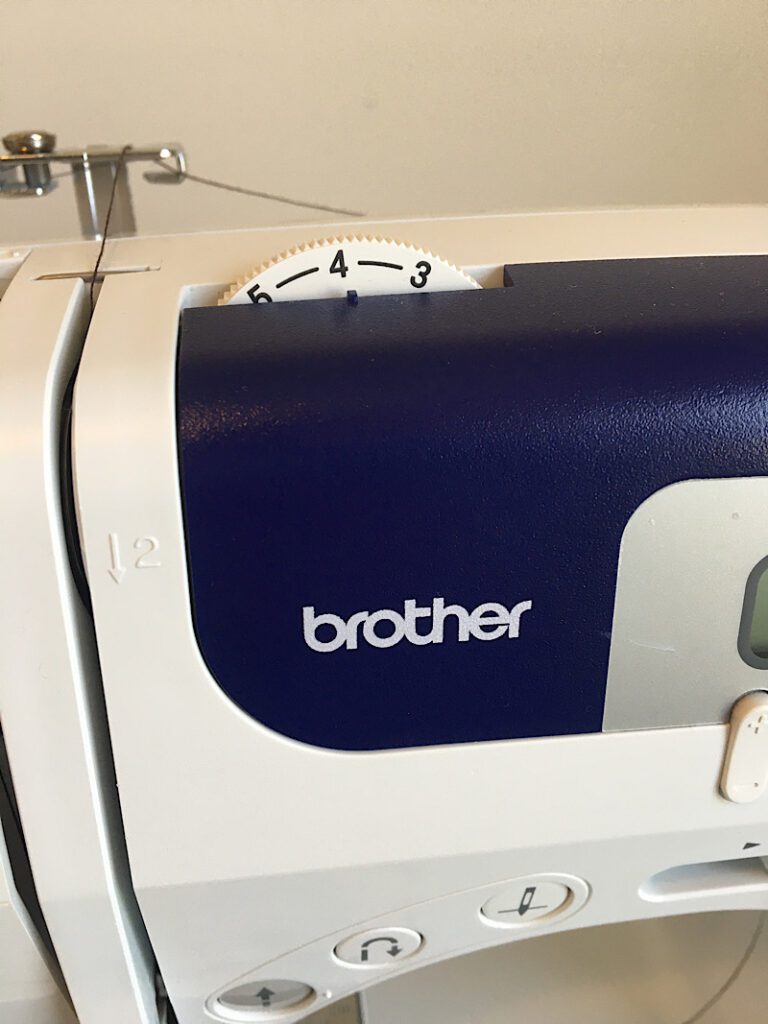
You know you have the tension set correctly when you can see none or very little of the bobbin thread when looking at the top of the seam, and none or very little of the top thread when looking at the bottom of the seam.
For many machines this means a tension between 3-4 or 3-5.
If this doesn’t solve the problem, try the next option!
2. Top Thread Is Not Properly Pulled Through Tension Disk
Before rethreading your machine, it is important that you raise your presser foot.
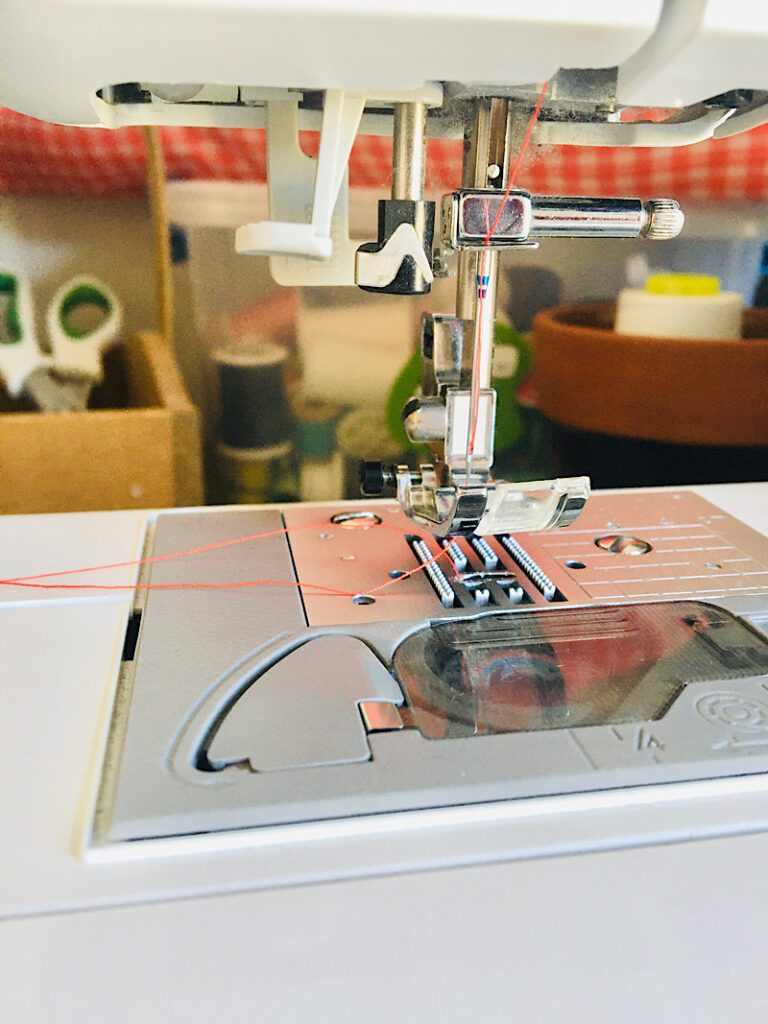
You might not have known this, but raising the presser foot opens up the tension disks and allows the thread to slide through them!
If the top thread is not properly able to slide through the tension disks, it will get stuck and either your machine won’t really sew at all, or the thread will keep unthreading.
To solve this issue, unthread the machine, raise the presser foot, and rethread it!
3. The Thread Is Caught Or Wrapped
If your thread seems normal and then comes unthreaded in the middle of a seam, this is the first thing I always check.
This is something that happens to me ALL the time, particularly when I am using old, slippery, or stiff threads. (I have a box of my grandmothers vintage threads, so this happens a lot!
Check to see if your thread is getting wrapped or stuck in one of three key places:
- The base of the spool pin
- The storage slit in the spool
- The top of the take- up lever.
If the thread is wrapped around the take up lever or the base of the spool pin, check the machine’s tension to make sure the thread is sliding smoothly and not being pulled through in spurts.
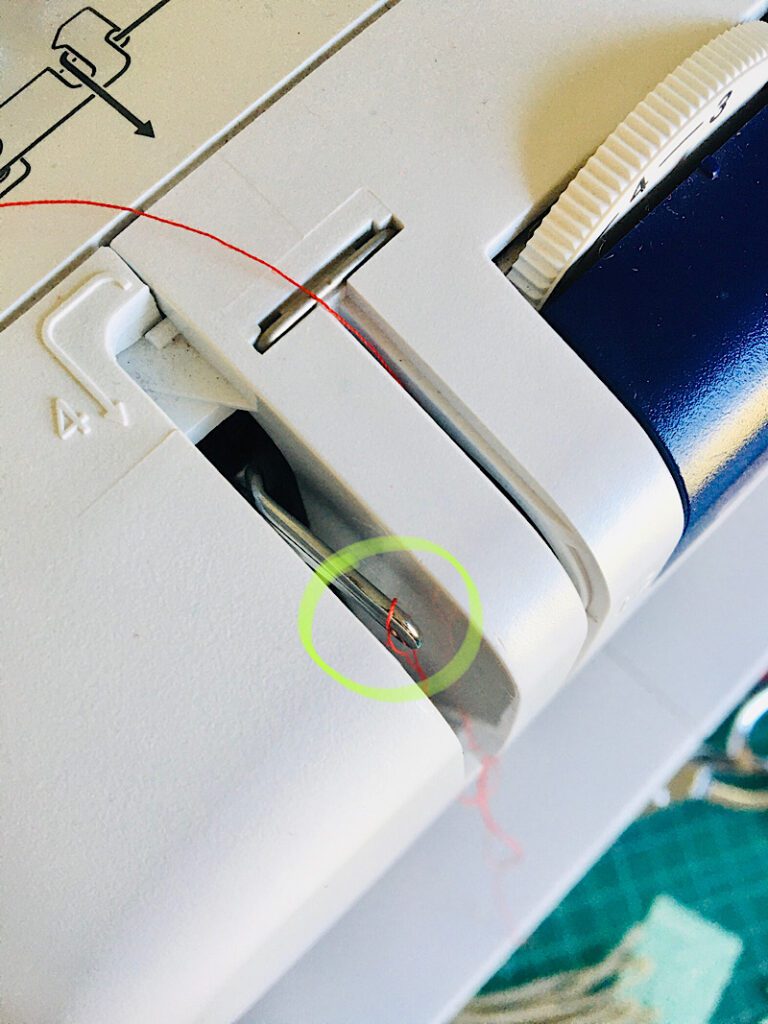
If the thread is stuck in the spool’s storage slit, then turn your spool upside down so that the slid is facing the opposite direction the thread unwinds.
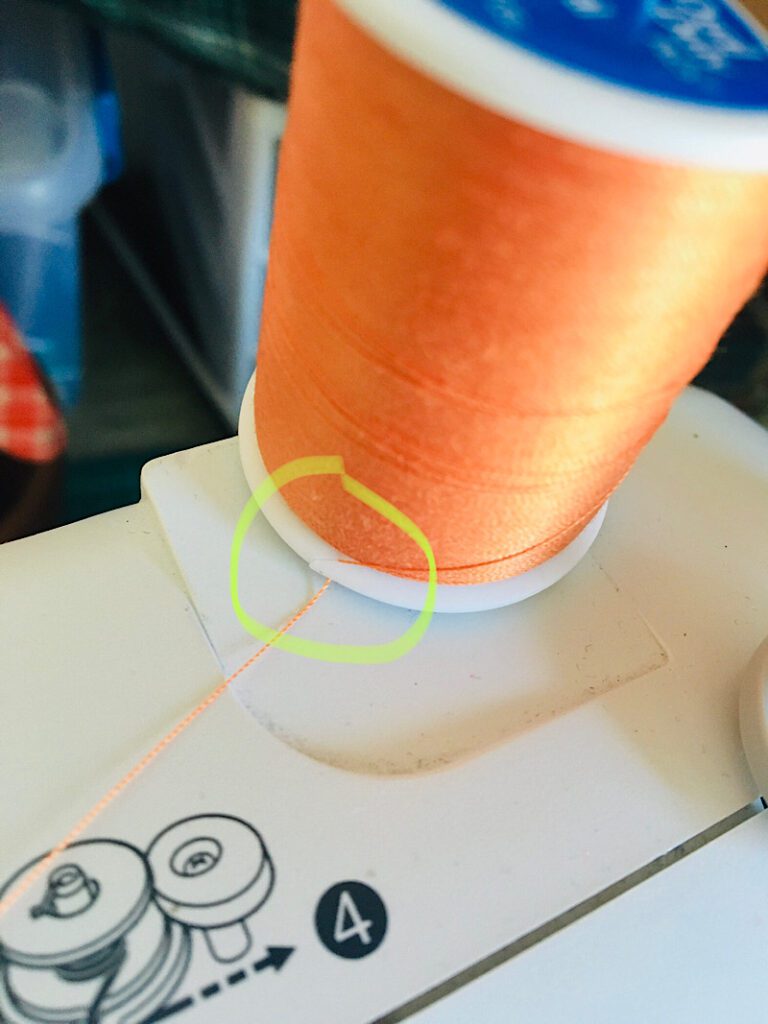
4. The Take-Up Lever Is Not In Position
Here’s a little hint and reminder: When you are threading your machine, make sure to raise the take up lever to the highest position (the needle will be in the highest position also.)
The reason for this is if you thread the needle when it is too low, and then start to sew, the take up lever will raise quickly and “take up” the thread right along with it!
If the lever is already in the highest position when you thread the machine and start sewing, then the lever’s next move is down, and the thread won’t be pulled out right away.
Another way to prevent this is to hold onto your thread tails when you start sewing.
5. Your Thread Tails Are Too Short
Related to the previous section, you need to make sure you don’t clip your thread tails to be too short.
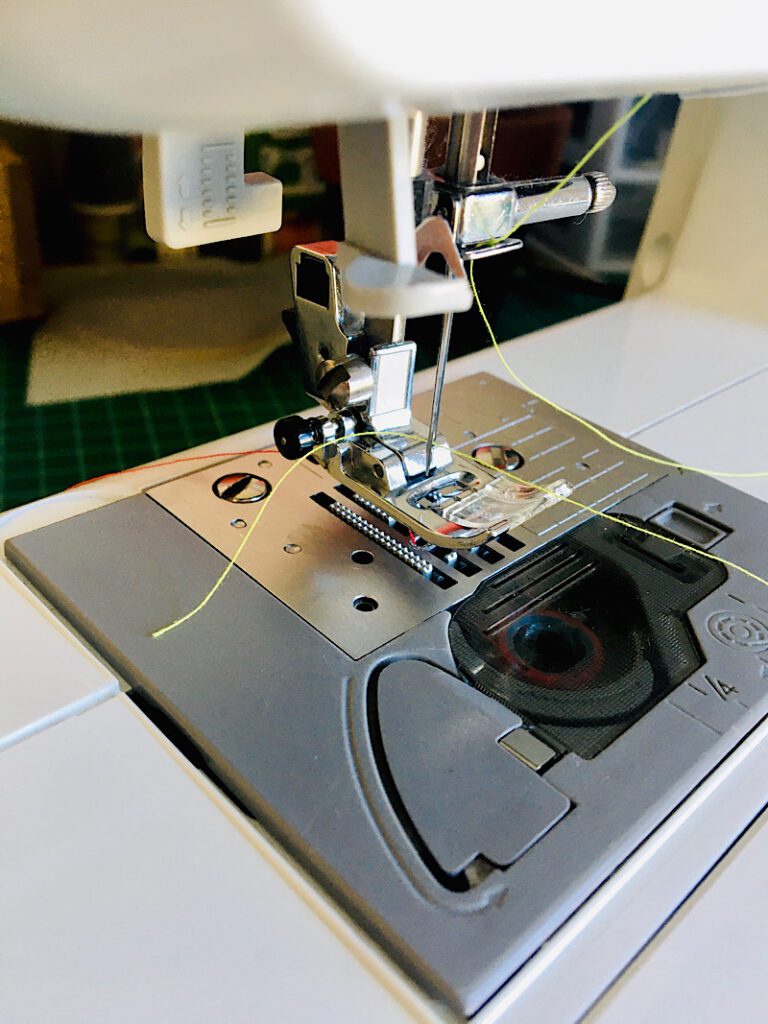
This is true when you first thread it, but more relevant for when you are in the middle of the project and frequently clipping the threads after sewing a seam.
Most sewing machines are probably fine with a thread tail of about 6 inches, but play around with yours, it may need longer!
6. The Spool Cap Is Too Large
Not all sewing machines require the use of a spool cap, so you might be able to skip this section.
If your sewing machine’s spool pin is horizontal rather than vertical (mine is vertical) then you use a spool cap to prevent the spool from flying off the pin while sewing.

Make sure you use a spool cap that is about the same size as the ends of the spool.
Using a spool cap that is too large can add an extra place for the thread to get caught on, and the extra friction from rubbing against the spool cap while unraveling can cause the needle to come unthreaded.
7. You Need A Thicker Needle
If you find that your thread is coming un threaded in the middle of a project, stop and think to yourself if your needle is appropriate for what you are sewing.
Not all needles are interchangeable, in fact you may not know that needles for thicker sewing materials are NOT just fatter needles! These heavy duty and specialty needles have a specific design features called grooves and scarfs, that allows the threads the flow through the needle properly.

Heavy duty needles take into account the fact that the thread needs to be able to pass through thick and dense fabric, and thin needles simply cannot manage the task.
The extra tension on the thread from piercing through a too-small hole in a too-small needle is enough to make it unthread itself.
Most sewing manuals have a basic guide of needle and thread selection.
8. The Needle Needs To Be Replaced/Reinstalled
Last of all, check to make sure that your needle is inserted correctly, and feel to make sure it isn’t bent and has no burrs.
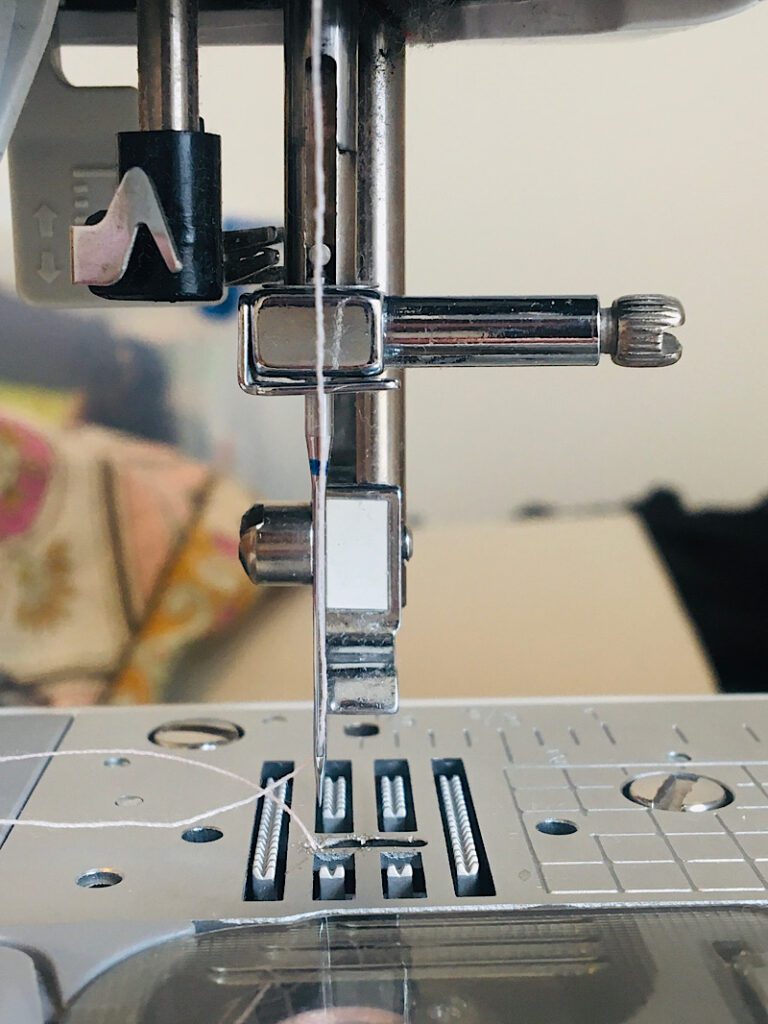
This means removing the needle and correctly re-inserting it, and then feeling it with your finger for any sharp places a thread might get stuck and pulled on.
Needles should sit up in the needle housing as high as they can go, be straight, and facing front
Conclusion
I end a lot of these troubleshooting articles in the same way, because the truth is that almost all sewing machine related problems can be solved by the golden two fixes:
- Rethreading your machine
- Replacing your needle
Of course, resetting the basic machine settings helps too!
I hope this guide was helpful in solving your unthreading problem!
If you discovered a different solution than what is listed here, please share it in the comments below to help our other readers!
And remember to sign up for my email list for more free sewing content.
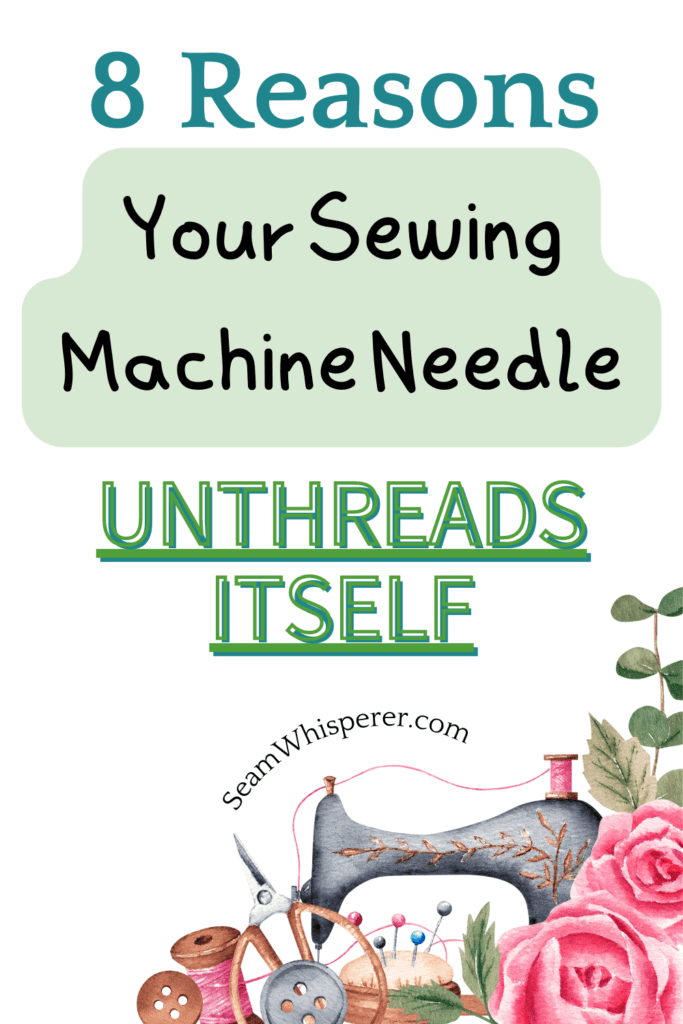

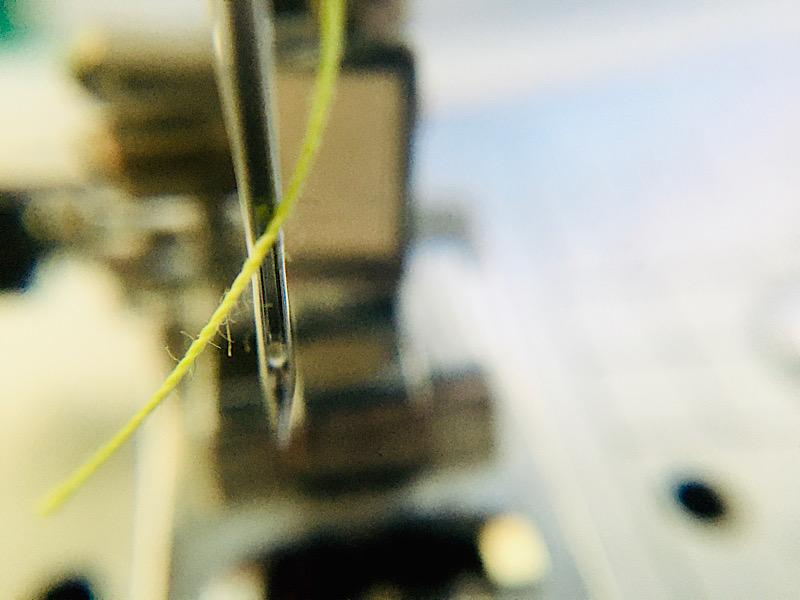
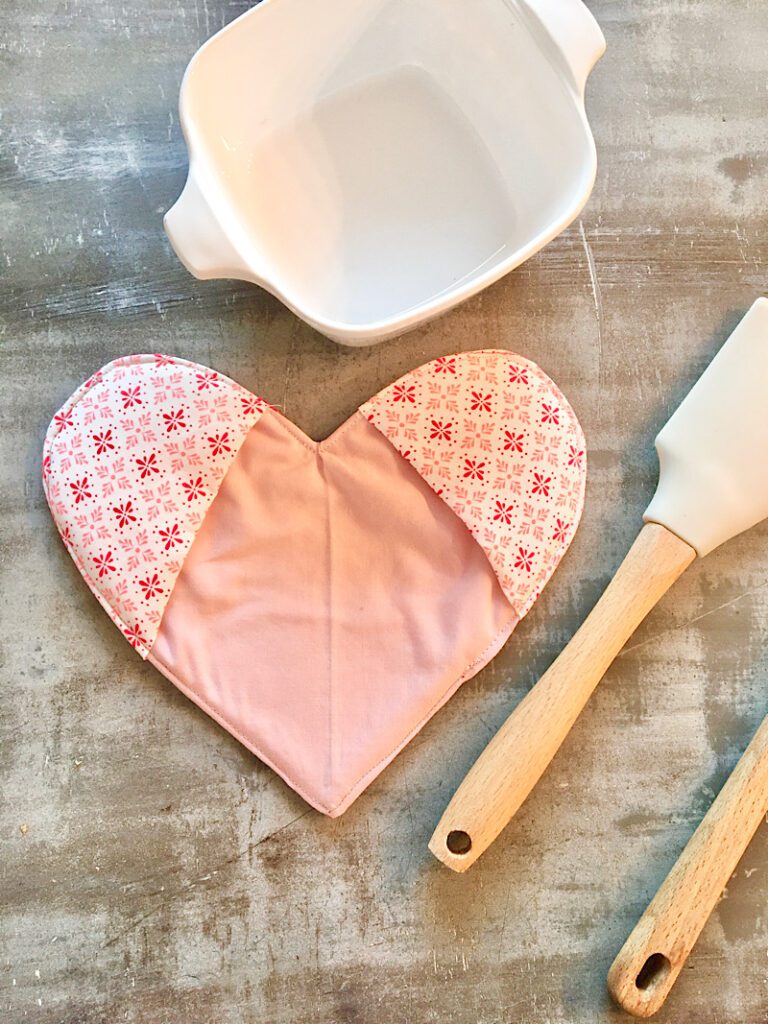
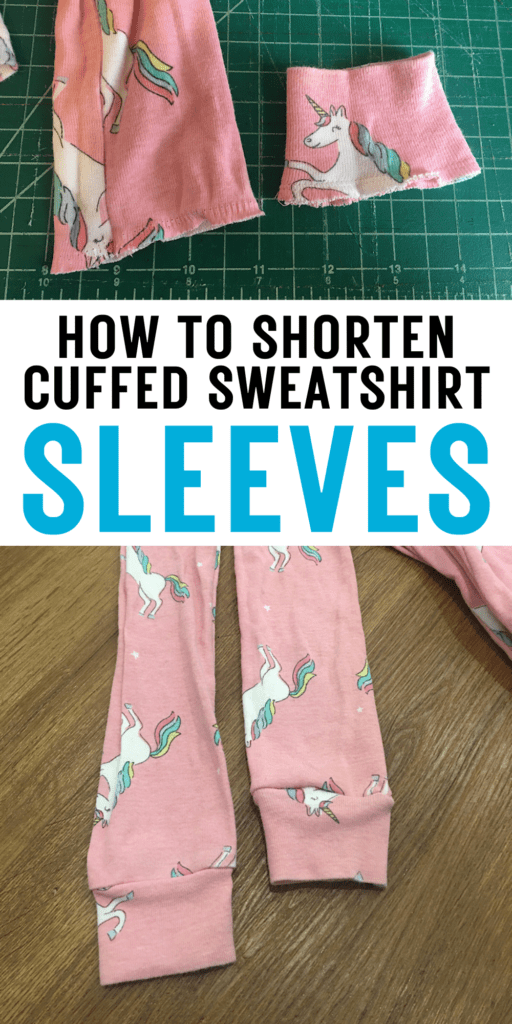

this article is very useful, thank you for making a good article
Excellent! Very helpful with illustrations and clear explanations.Thanks for the help.
Im so glad I could help you Brenda!
“A picture is worth a thousand words”:) Your pictures, with highlighting, are impressive! Your instructions and explanations are clear, concise and easy to understand. My problem turned out to be a bent needle. I SHOULD have thought to check the needle but instead, I changed threads, rethreaded several times, changed bobbins and did it all a second time…. until my eyes were sore. Then I went online and read your article. Thank you so much!!
Lynne I am so glad to hear it! You are so welcome. That makes my day!
I resurrected my vintage Dressmaker SWA2000 after my two pricey computer /embroidery machines needed expensive repairs. It worked flawlessly on quilt piecing, etc., then stopped making basic stitch when needle unthreaded. I did check all the usual troubleshooting carefully without success. This is a very basic easy to access and simple machine (unlike the high level ones I had no problem maintaining). What else should I try? I cleaned it, checked each process, studied the entire function but cannot see anything awry. Is there another screw or adjustment place not commonly at fault?
Hi Jeanene, Have you looked at the tension? Have you tried a different needle? And finally have you watched what the spool does when you sew as the needle unthreads? When I use slippery thin thread and the tension is wrong it can wind around the spool holder and get caught.